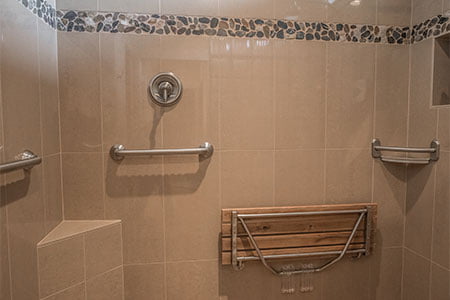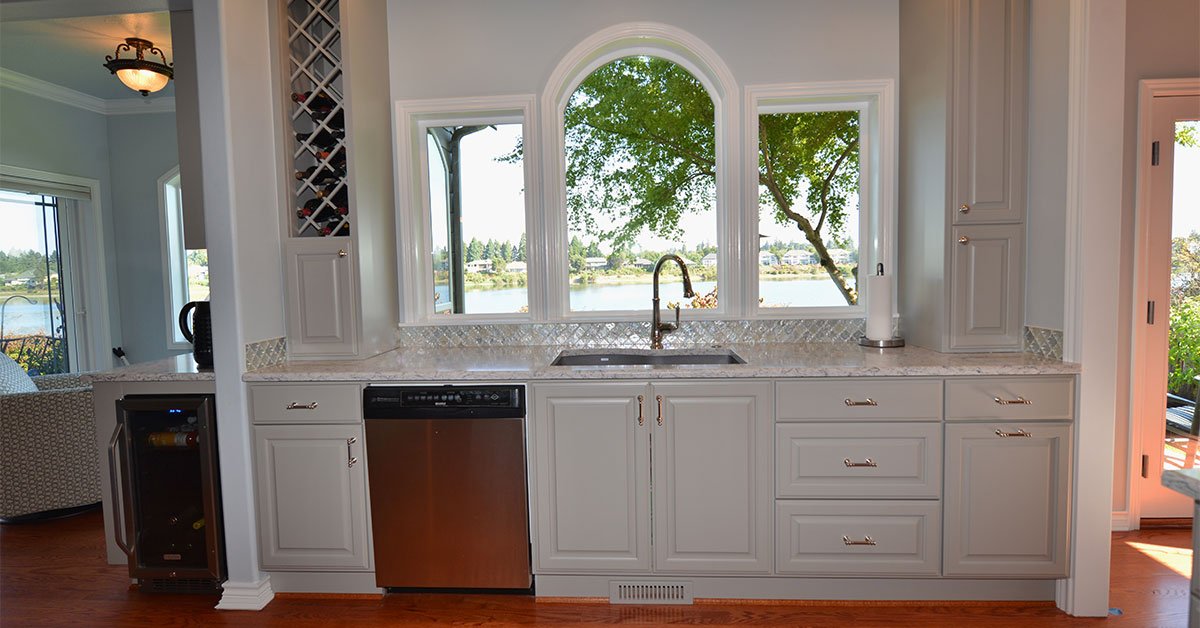Does Your Home Remodeling Contractor Offer Universal Design?
Universal Design has nothing to do with futuristic projections of life in outer space. But it does have to do with the future and interior space. Universal Design is a home design philosophy that focuses on human ergonomics and making homes and buildings usable for everyone regardless of ability, size, or age.
According to a 2017 article in the New York Times, older people have the highest rate of homeownership in the country. Yet, less than 4 percent of U.S. housing has all three of the most critical accessibility features: entrances without steps, single-floor layouts, and walkways wide enough to accommodate a wheelchair.
Though it’s a valuable service, very few people look forward to moving into an assisted care home. So, how do home remodeling contractors help a population that increasingly wants to stay home? They tackle the problem head-on – highlighting and correcting how standard home design inhibits access for people with limited mobility.
The History of Disability-Specific Design
Driven by significant medical advances that increased life expectancy for those suffering from severe impairments, as well as the influx of WWII soldiers being sent home with disabling injuries, the twentieth-century ushered in new laws designed to reduce discrimination and increase social inclusion.
The shift had a significant effect on building design, urging designers to incorporate accessibility into the design of everything from products and services to indoor and outdoor environments. However, it wasn’t until the 1970s when the more widely recognized concept of accessibility emerged. Only then did the field of assistive technology and design become readily available to the general public.
In 2005, The Disability Act defined Universal Design as “The design and composition of an environment so that it may be accessed, understood, and used.”
Accessibility for Every Age, Ability, and Size
 Although a vast majority of UD clients are the elderly, the mission of the movement is to create safe living environments for infants, toddlers, people with disabilities, and people suffering from arthritis, fibromyalgia, and any other condition that makes functioning within standard building design a challenge.
Although a vast majority of UD clients are the elderly, the mission of the movement is to create safe living environments for infants, toddlers, people with disabilities, and people suffering from arthritis, fibromyalgia, and any other condition that makes functioning within standard building design a challenge.
Most contractors do not build homes for easy accessibility, and people don’t realize how inaccessible their homes are until they break a limb or have to move around in a wheelchair. Suddenly something as benign as carpeting can become a hazard. UD home remodeling contractors install features like bare floors, comfort height toilets, door levers, fixed shower heads with handheld controls, 36″ doorways, lowered countertops, grab bars, and ramps.
Cleaning up the “clinical” element
It’s a common misconception that Universal Design turns beautiful homes into veritable health clinics. The mission of home remodeling contractors who specialize in these types of upgrades is to change the language around accessibility. Universal Design Certified Professionals receive training in blending universally appealing design features with universal accessibility. By avoiding terms like “geriatric,” “handicap,” and “ADA,” homeowners are more open to things like “support materials,” designed to integrate with common architectural elements.
Many certified Salem home remodeling contractors even dream of a future where the term “Universal Design” is unnecessary; that every home will come standard with both accessibility and energy efficiency.
Read on to find out how a remodeler differs from a general contractor and which offers the best services for your next home improvement project.

